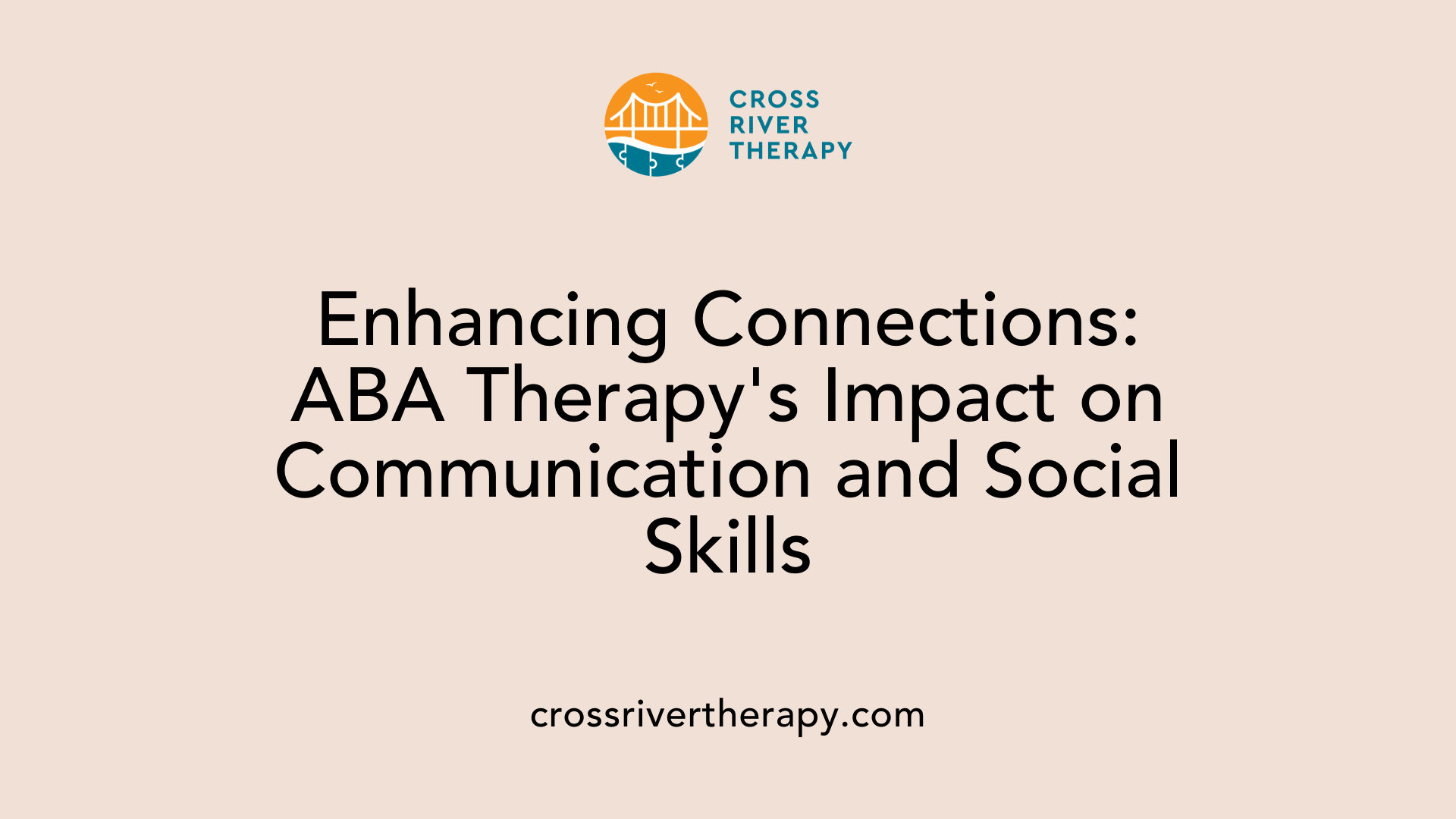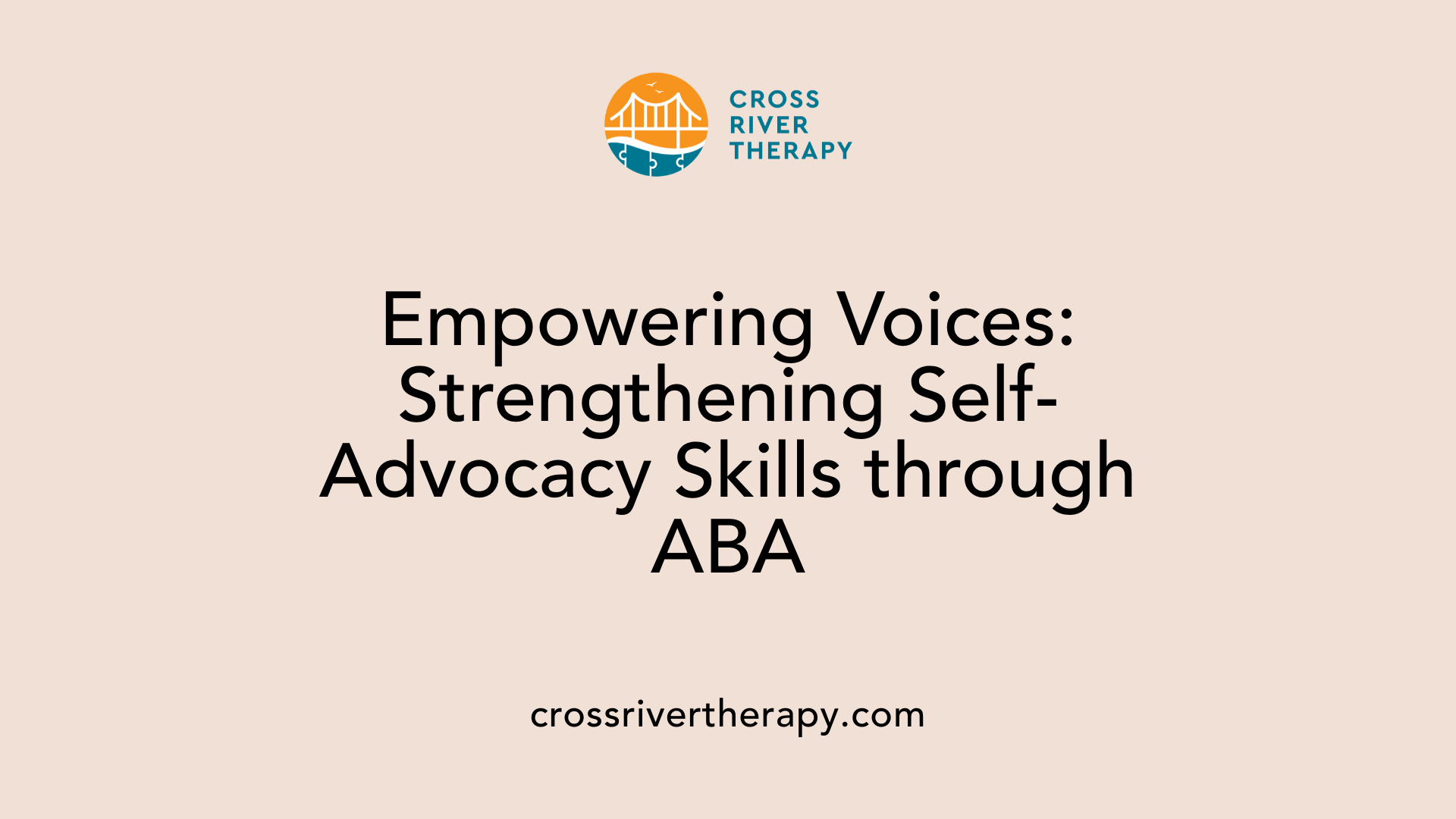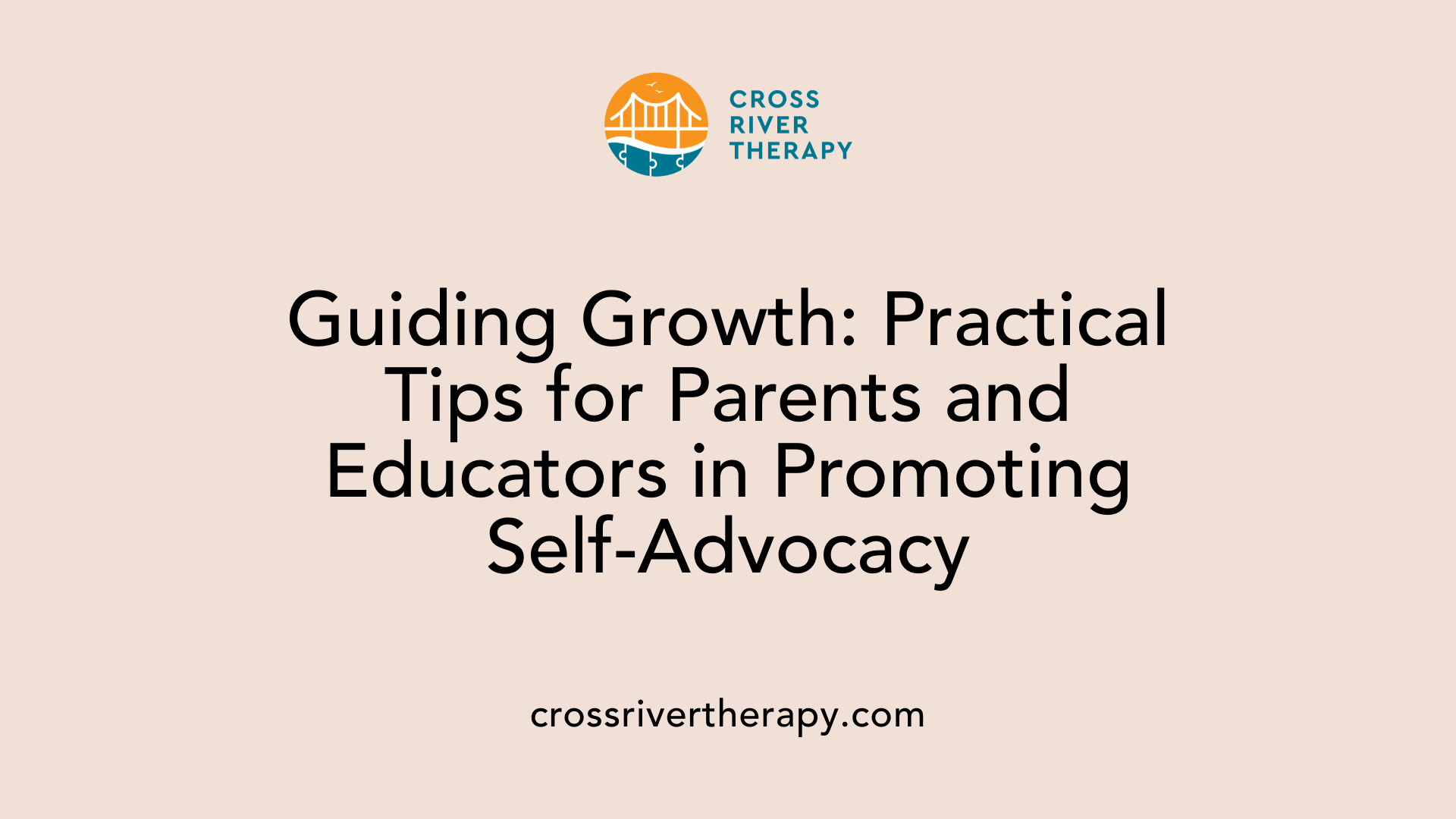How School-Based ABA Therapy Enhances Self-Advocacy Skills
Empowerment Through Communication and Life Skills
Understanding the Role of ABA Therapy
Applied Behavior Analysis (ABA) therapy is widely recognized for its efficacy in promoting positive behavior changes in individuals, particularly those diagnosed with Autism Spectrum Disorder (ASD). One of the core objectives of ABA therapy, especially when delivered in a school setting, is to enhance self-advocacy skills, which are crucial for fostering independence and confidence in students. This article delves into how school-based ABA therapy plays a significant role in developing self-advocacy skills, exploring its impact on communication, social interactions, and independence.
Comprehensive Benefits of School-Based ABA Therapy

What are the benefits of school-based Applied Behavior Analysis (ABA) therapy?
School-based Applied Behavior Analysis (ABA) therapy offers numerous advantages for children with autism. This method provides structured support specifically tailored to meet individual learning styles, facilitating enhanced academic performance and improved social skills. Such targeted interventions enable students to better engage with their peers and participate meaningfully in classroom activities.
One of the core objectives is to promote integration in the classroom environment by fostering essential life skills. These skills not only support academic success but also improve interpersonal relationships, which are crucial for social development.
Evidence-Based Approaches
Effective strategies such as Discrete Trial Training (DTT) and Natural Environment Teaching (NET) play a significant role in ABA therapy.
- Discrete Trial Training breaks tasks down into small, manageable steps, allowing for focused learning and mastery of specific skills.
- Natural Environment Teaching emphasizes teaching skills in everyday contexts, thereby helping children generalize these learned behaviors to real-life situations.
Collaborative Support
Successful ABA therapy in schools involves collaborative efforts among therapists, educators, and families. This team-based approach ensures that interventions are both effective and aligned with each child’s unique needs.
As children progress, they not only build independence and self-advocacy skills but also enhance their communication abilities and reduce problematic behaviors. The overall aim is to create a positive learning environment conducive to the growth and development of all students.
Impact on Communication and Social Interactions

What impact does ABA therapy have on communication and social interactions?
ABA therapy has a significant impact on communication and social interactions, especially for individuals diagnosed with autism. It employs a systematic instructional approach that includes techniques such as positive reinforcement, prompting, and the Picture Exchange Communication System (PECS). These methods enhance both verbal and non-verbal communication skills, allowing children to express their needs more effectively.
- Positive Reinforcement: This strategy rewards children for demonstrating appropriate social behaviors, encouraging them to replicate these behaviors in ongoing interactions.
- Prompting Techniques: Therapists use various prompts to guide children when they encounter challenges in communication, thereby facilitating better expression of their thoughts and desires.
- PECS: The Picture Exchange Communication System is a visual support tool that enables children to communicate by exchanging pictures for desired items or activities, enhancing their capacity to convey their needs.
Through rigorous practice and breaking down complex communication tasks into manageable steps, ABA therapy helps individuals develop functional communication abilities. This ability is crucial not only for day-to-day conversations but also for building meaningful relationships.
Enhancing Social Skills
In addition to communication, ABA therapy emphasizes developing essential social skills:
- Interpretation of Social Cues: Children learn to recognize and respond to various social cues, which is fundamental in peer interactions.
- Role-Playing Scenarios: This technique allows children to practice real-life social situations, helping them to initiate conversations and maintain eye contact during interactions.
Thus, improved communication skills lead to enhanced social interactions, fostering independence and stronger relationships for children with autism.
Developing Self-Advocacy Through ABA Therapy

How does ABA therapy enhance self-advocacy skills for students with autism?
ABA therapy significantly contributes to the development of self-advocacy skills in students with autism by utilizing targeted communication techniques and real-life practice scenarios. One effective method employed is Functional Communication Training (FCT), which focuses on enhancing communication capabilities. By teaching children the words or signs they need to express desires and needs, FCT helps them articulate their preferences clearly.
In addition, role-playing plays a crucial role in ABA therapy. Through role-playing scenarios, children practice various social situations where they must advocate for themselves, learning to express their feelings and make choices confidently. This method not only builds communication skills but also fosters social competence, enabling children to navigate real-life interactions more proficiently.
ABA therapists encourage children to engage in choice-making opportunities. By allowing them simple decisions in various contexts, such as selecting activities during therapy, children develop a sense of autonomy and self-awareness. This empowerment is crucial as it reinforces their ability to assert their needs and preferences in everyday life. Moreover, involving families in discussions about autism and individual rights further strengthens their understanding of advocacy, creating a solid support system around each child.
Role of Functional Communication Training
Functional Communication Training is a fundamental component of ABA therapy that elevates a child's ability to advocate for themselves. This approach is critical as it:
- Enhances Vocabulary: Expands the linguistic arsenal of the child, making it easier to express needs.
- Utilizes Visual Supports: Leverages tools like picture schedules to aid understanding and communication.
- Encourages Social Interaction: Provides structured opportunities to practice and refine interaction skills with peers.
Overall, ABA therapy not only improves children’s communication and decision-making skills but also promotes independence, thus laying the groundwork for effective self-advocacy. By integrating these practices into therapy, children gain the tools needed to actively express themselves and participate in decision-making processes in their lives.
Strategic Approaches to Enhancing Self-Advocacy Skills
What strategies are used in ABA therapy to develop self-advocacy skills?
ABA therapy employs several effective strategies to develop self-advocacy skills in children with autism. One fundamental approach is Functional Communication Training (FCT), which focuses on helping children express their feelings and needs more clearly. This reduces frustration and encourages them to seek assistance more confidently.
Another important method is providing choice-making opportunities. Allowing children to make simple decisions fosters a sense of control, empowering them to understand their preferences and strengths. Coupled with this, role-playing scenarios are utilized during therapy sessions. This technique allows children to practice navigating various social situations, recognize social cues, and develop essential conversational skills, including initiation and maintaining eye contact.
Importance of celebrating successes and reinforcement
Celebrating children's achievements in self-advocacy is vital in reinforcing their efforts. This process not only builds their confidence but encourages a growth mindset where the focus shifts towards the progress made rather than the outcome. Positive reinforcement strategies—like rewarding appropriate behaviors—are integral. They encourage children to repeat those behaviors in real-life contexts.
By integrating these strategies, ABA therapy equips children with the tools they need to effectively advocate for themselves. Moreover, tailoring these approaches to suit individual needs, while also connecting with advocacy organizations, can significantly enhance their likelihood to assert their rights and navigate diverse environments confidently.
| Strategies | Description | Benefits |
|---|---|---|
| Functional Communication Training | Focuses on expressing needs and feelings clearly | Reduces frustration; promotes clarity |
| Choice-making Opportunities | Allows children to make decisions to enhance sense of control | Empowers children; builds self-awareness |
| Role-playing | Provides practice in social situations, recognizing cues and responding | Develops conversation skills; builds confidence |
| Celebration of Achievements | Highlights successes in self-advocacy, reinforcing positive behavior | Boosts confidence; fosters a growth mindset |
Challenges in Implementing Self-Advocacy Within ABA

What challenges might arise when implementing self-advocacy skills through ABA therapy?
Implementing self-advocacy skills through ABA therapy can present several challenges. One major issue is the differences in skill generalization among students. Not every child with autism is able to transfer skills learned in therapy to real-life situations. Some may struggle to apply what they've learned in the therapy room when interacting with peers or in different environments, leading to inconsistent outcomes.
Resistance to Change
Another challenge is resistance to change. Some children may become overly reliant on paraprofessionals or therapists, which can hinder their ability to act independently. Educators may need structured plans to encourage gradual independence while ensuring that children feel comfortable navigating social contexts on their own.
Ethical Concerns in ABA
Additionally, there are potential ethical concerns regarding the application of ABA. Critics argue that ABA's historical focus has often been on compliance and achieving socially acceptable behaviors, which may inadvertently overlook the importance of fostering self-advocacy and respecting neurodiversity. This perspective raises ethical dilemmas about the balance between behavioral conformity and individual expression.
Socioeconomic Barriers
Lastly, socioeconomic barriers can impede access to ABA services, which complicates the implementation of self-advocacy skills. Families from lower socioeconomic backgrounds may find it challenging to afford consistent and high-quality ABA therapy, limiting the opportunities available for their children to develop self-advocacy skills effectively.
| Challenge | Description |
|---|---|
| Skill Generalization | Individual differences can lead to inconsistent application of skills across settings. |
| Resistance to Change | Over-reliance on paraprofessionals can impede independence. |
| Ethical Concerns | Focus on compliance may overlook self-advocacy and neurodiversity. |
| Socioeconomic Barriers | Financial limitations can restrict access to necessary ABA services. |
Promoting self-advocacy skills in children requires mindfulness of these challenges to create supportive and empowering learning environments.
Practical Advice for Parents and Educators

What practical advice can be offered to parents and educators for implementing self-advocacy in a school setting using ABA?
To effectively promote self-advocacy in school settings through ABA, establishing consistent environments is vital. Parents and educators should work closely to create routines that encourage open communication. This collaboration ensures that children receive the same messages and support both at home and school, reinforcing their understanding of self-advocacy.
Engaging children through role-playing can further enhance their self-advocacy skills. By practicing various social situations at home, children can become familiar and comfortable with expressing their needs and preferences. For example, role-playing scenarios where they ask for help or assert their needs can build their confidence with real-life interactions.
Additionally, having open discussions about autism and the importance of self-advocacy can empower children. Modeling advocacy behavior by demonstrating how to express needs effectively can serve as a practical guide for them. Regular communication between parents and educators is crucial, as it helps in tracking the child's progress and reinforcing learned skills, ensuring they are consistently applied.
Involving children in conversations about their therapy and decisions related to their care fosters a sense of autonomy. Children should be encouraged to share their thoughts and feelings about the therapy process, thus enhancing their ability to advocate for themselves.
Celebrating even the smallest successes is an important aspect of this journey. Recognizing children’s efforts in self-advocacy—whether it’s speaking up in class or expressing preferences—helps to boost their self-esteem. Constructive feedback coupled with genuine praise fosters a growth mindset, empowering children to continue advocating for themselves with confidence.
| Strategy | Description | Benefits |
|---|---|---|
| Creating consistent environments | Establish routines at home and school that encourage open communication about self-advocacy. | Builds a supportive and understanding atmosphere. |
| Role-playing scenarios | Practice different social interactions at home to build confidence in expressing needs and preferences. | Prepares children for real-life situations. |
| Open discussions | Encourage conversations about autism and self-advocacy to empower children. | Fosters understanding and reduces stigma. |
| Collaborative tracking | Maintain regular contact between parents and educators to monitor progress and reinforce skills. | Ensures consistency in support and instructions. |
| Celebrating successes | Acknowledge small victories in self-advocacy to enhance self-esteem and motivation. | Promotes a positive outlook toward self-expression. |
Using these strategies, parents and educators can work together to support children in becoming effective self-advocates, promoting their independence and confidence in various aspects of life.
Promoting Independent Living Skills
Fostering self-sufficiency and autonomy
ABA therapy plays a pivotal role in promoting independence for children with autism. By focusing on personalized instruction, the therapy addresses the unique needs of each child, enabling them to develop vital life skills. This individualized approach empowers children to participate in daily activities and take charge of their own lives.
Through ABA sessions, children learn essential tasks like personal hygiene, time management, and how to navigate social settings. This training fosters self-sufficiency, helping them gain confidence in their abilities. The skills they acquire not only aid in daily living but also prepare them for greater autonomy in the future.
Mastering daily living tasks
One of the core components of ABA therapy is mastering daily living tasks, which is crucial for fostering independence. Children develop routines for activities such as dressing, eating, and cleaning up after themselves. These skills enhance their self-esteem and promote a sense of achievement.
In school-based ABA therapy, there’s a strong emphasis on teaching children to manage their schedules and responsibilities. This structured approach allows students to understand their environments better and make informed decisions about their daily lives.
How does school-based ABA therapy promote independence among students?
School-based ABA therapy promotes independence by equipping students with essential life skills. Through structured teaching methods, students learn to master daily living tasks, such as personal hygiene and managing time effectively. These skills are crucial for fostering self-sufficiency and autonomy, empowering students to take part in decision-making and actively participate in their communities. The therapy’s focus on individualized support ensures that students gain confidence in their abilities, leading to long-term success both in and outside of school.
Empathy and Emotional Understanding in ABA
How does ABA therapy aid in developing emotional understanding and empathy?
ABA therapy plays a pivotal role in developing emotional understanding and empathy in children with autism through interactive methodologies such as role-playing and storytelling. These activities provide a safe space for children to explore various perspectives, helping them identify emotions in themselves and others.
Role-playing scenarios are particularly effective, allowing children to practice social situations where they must recognize emotional cues. For instance, they may act out scenes where one character is sad, teaching them to respond empathetically. This practice reinforces their social skills and encourages them to express understanding and compassion.
Additionally, storytelling allows children to engage with characters' emotions, which enhances their ability to relate to others. By discussing the feelings of characters in stories, children learn how to interpret various emotional states and respond appropriately in real life.
Incorporating social skills training into ABA therapy further solidifies these lessons. During these training sessions, children can apply their understanding of emotions in real interactions, improving their ability to navigate friendships and advocate for themselves.
The Importance of Emotional Skills in Self-Advocacy
Ultimately, developing emotional understanding fosters an environment where children can express not just their own needs but also support their peers. By enhancing their empathy, they become better equipped to communicate effectively, a critical component of self-advocacy.
These tools are vital for fostering meaningful relationships and ensuring children can articulate their preferences and needs, contributing to their overall independence and self-confidence.
Exploring Social Skills Through Group ABA Sessions
What role do group sessions have in ABA therapy for social development?
Group sessions in ABA therapy are instrumental in fostering social development among children with autism. These sessions create a structured environment where children can interact with their peers, allowing them to practice and refine crucial social skills. For instance, children learn to take turns in conversations, initiate interactions, and actively share their thoughts and interests.
The ability to engage in group activities enables children to build friendships and expand their social networks. Importantly, these relationships enhance the self-advocacy skills they work on in individual therapy sessions. The social dynamics of group interactions often lead to rich learning opportunities where children observe and mimic appropriate social behaviors exhibited by their peers.
In group settings, children can also experiment with various social strategies, such as how to recognize and respond to social cues. Implementing role-playing scenarios during these sessions further reinforces these strategies, allowing children to practice initiating conversations, maintaining eye contact, and managing anxiety in social contexts. Ultimately, the interactive nature of ABA group sessions significantly contributes to holistic social skill development, paving the way for increased confidence and effective self-advocacy in everyday situations.
Addressing Social Anxiety with ABA Techniques
How does ABA therapy help in managing social anxiety among students?
ABA therapy plays a significant role in managing social anxiety for individuals on the autism spectrum. One effective approach used is gradual exposure to social scenarios. This process involves introducing students to social situations step-by-step, starting with less intimidating environments and progressively moving toward more challenging interactions. By creating a controlled setting, children can gradually acclimate to social cues and interactions without becoming overwhelmed.
Role-playing further enhances this learning experience. Through scripted social interactions, students can practice responding to peers, recognizing social cues, and maintaining appropriate eye contact. These role-playing scenarios not only build familiarity but also help reduce anxiety by providing a safe space to rehearse responses.
In addition to exposure, ABA therapy teaches relaxation techniques that empower students to manage their anxiety. Techniques such as deep breathing, visualization, and mindfulness exercises are incorporated into sessions. These methods serve as tools that children can draw upon in real-life situations to calm themselves, promoting a sense of control and confidence in social settings.
Overall, these ABA strategies not only help students face their anxieties but also contribute to skillful self-advocacy, enabling them to express their needs and preferences effectively in various environments.
The Role of Reinforcement in Self-Advocacy
How is positive reinforcement used in ABA therapy to enhance self-advocacy?
Positive reinforcement is a pivotal strategy in ABA therapy used to enhance self-advocacy skills. By rewarding children for demonstrating advocacy-related behaviors, such as asking for help or expressing preferences, ABA encourages the repetition of these actions. This reinforcement boosts students' confidence, motivating them to engage more actively in social contexts and advocate for their needs and rights. Over time, these practices help reinforce a strong sense of self-worth and autonomy in students.
Benefits of Positive Reinforcement Strategies
The incorporation of positive reinforcement in ABA therapy provides several advantages:
- Confidence Building: Rewards help in reinforcing successful advocacy attempts, which encourages children to speak up more.
- Skill Development: By consistently acknowledging their self-advocacy efforts, children learn to navigate social interactions effectively.
- Enhanced Communication: This approach facilitates better expression of needs and preferences, bridging communication gaps.
Encouraging Behaviors that Promote Self-Advocacy
Encouraging self-advocacy through specific behaviors is essential. Here are some strategies:
- Role-Playing: Simulating social situations allows children to practice expressions of need in a safe environment.
- Social Learning: Group sessions foster interactions where children can practice advocating for themselves with peers.
- Celebrating Achievements: Acknowledging even the smallest successes helps instill confidence and reinforces their ability to self-advocate.
The consistent application of positive reinforcement strategies helps children with autism develop essential self-advocacy skills, enabling them to articulate their needs and enhancing their independence.
Supporting Families in the Advocacy Journey
What is the significance of family involvement in ABA-informed self-advocacy?
Family involvement is crucial in ABA-informed self-advocacy since it encourages consistent reinforcement and support for children across various environments. When families are engaged in the learning process, they can model effective advocacy behaviors and foster open discussions about their children’s needs and preferences. This involvement not only ensures that self-advocacy strategies are practiced at home but also helps families understand how to support their children in different settings, such as school or community activities.
Building Collaborative Support Systems
Families can significantly enhance support systems when they actively participate in therapy sessions and meetings with educators. This creates a productive partnership where all parties can share insights and strategies that align educational and home environments. Collaboration leads to a unified approach, reinforcing advocacy skills consistently and effectively.
Strategies for Engaging Families
- Regular Communication: Maintain open lines of communication between therapists, educators, and families to track progress.
- Educational Workshops: Organize workshops focusing on advocacy skills, helping families learn techniques to support their children's growth.
- Resource Sharing: Provide families with materials and resources on self-advocacy strategies tailored for their children.
These strategies strengthen the advocacy journey, ensuring that children receive comprehensive support, making them more equipped to express their needs and assert their rights confidently. Involving the whole family in this process not only enriches children's experiences but also builds an empowered atmosphere conducive to their growth.
Empowerment Through ABA Therapy
School-based ABA therapy provides an invaluable framework for enhancing self-advocacy skills in students with autism. Through structured techniques and collaborative approaches, it supports communication development, fosters independence, and empowers students to navigate their social worlds confidently. By integrating ABA strategies across settings and encouraging engagement from families, educators, and therapists, students gain the necessary tools to advocate for themselves effectively. Emphasizing self-advocacy in ABA interventions ensures that students not only succeed educationally but also thrive in all aspects of their lives, embracing their strengths and asserting their needs confidently.
References
- 5 Benefits of ABA Therapy for Autistic Child | Inclusive ABA
- How ABA Therapy Helps With Social Skills
- How ABA Therapy Enhances Social Skills in Children with ASD
- Self-Advocacy for Children with Autism | ABA Therapy Atlanta, GA
- The Importance of Self-Advocacy - The Autism Helper
- School-Based ABA Therapy - Surpass Behavioral Health
- School-Based ABA Therapy: Boosting Learning and Behavior
- School-Based and Center-Based ABA Programs
- Unit 2: 10 Benefits of ABA for School Readiness - AutismCOE



